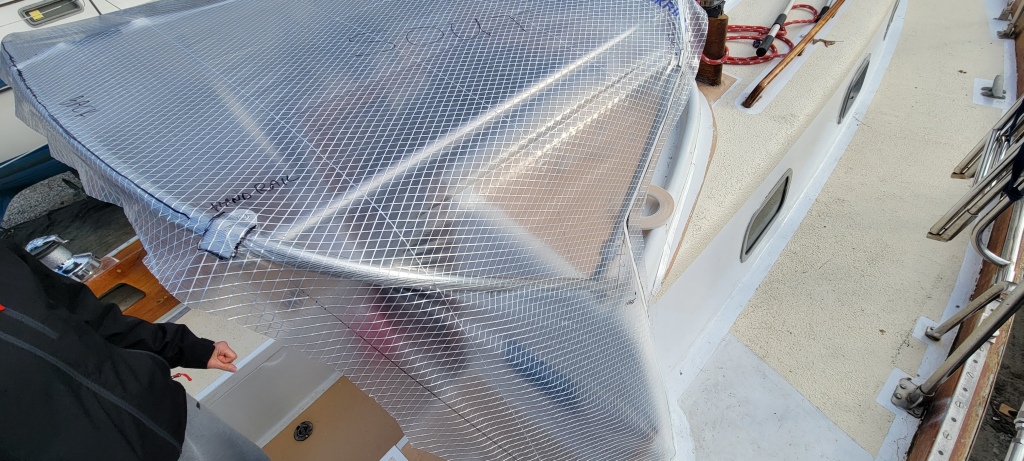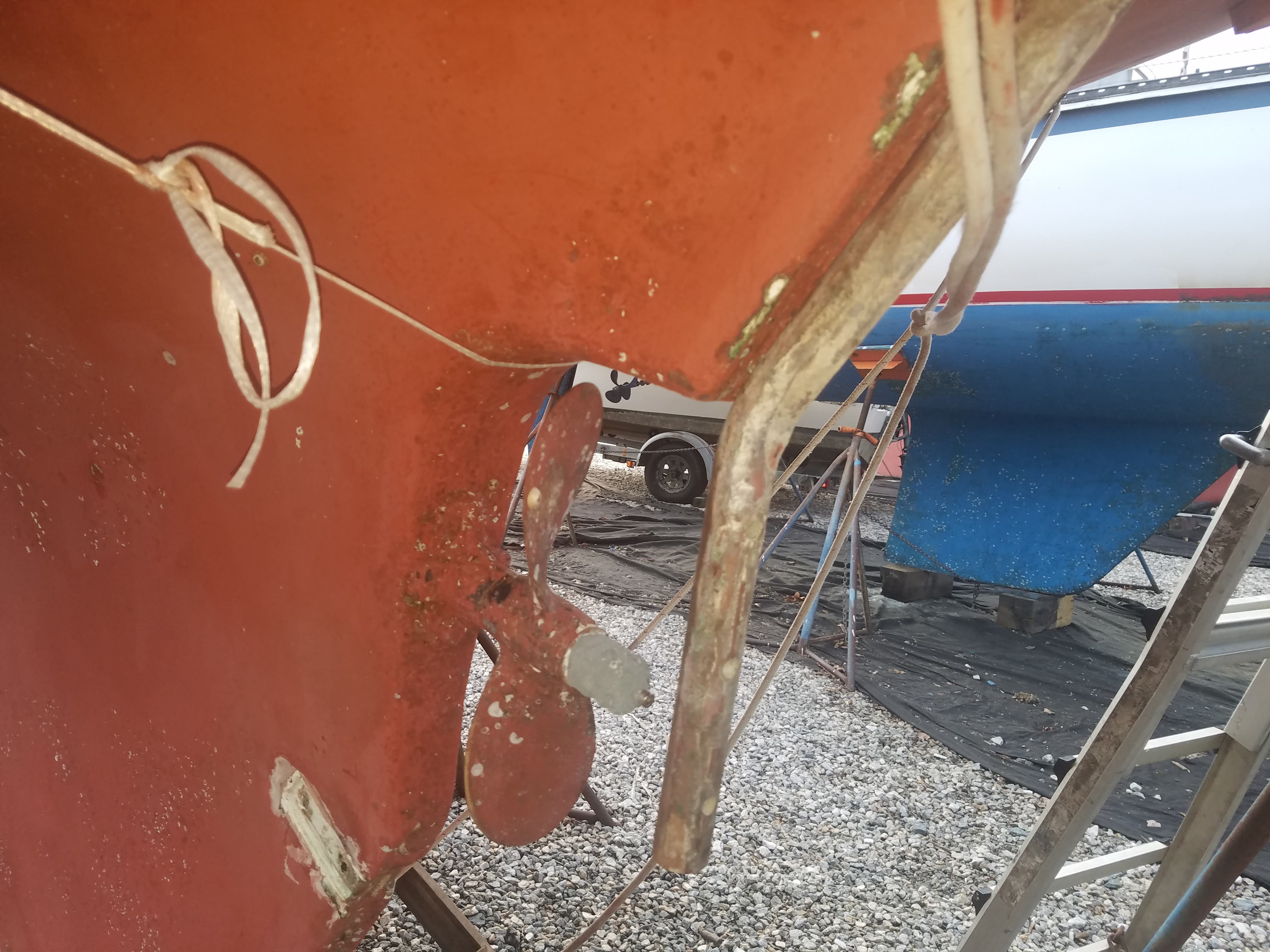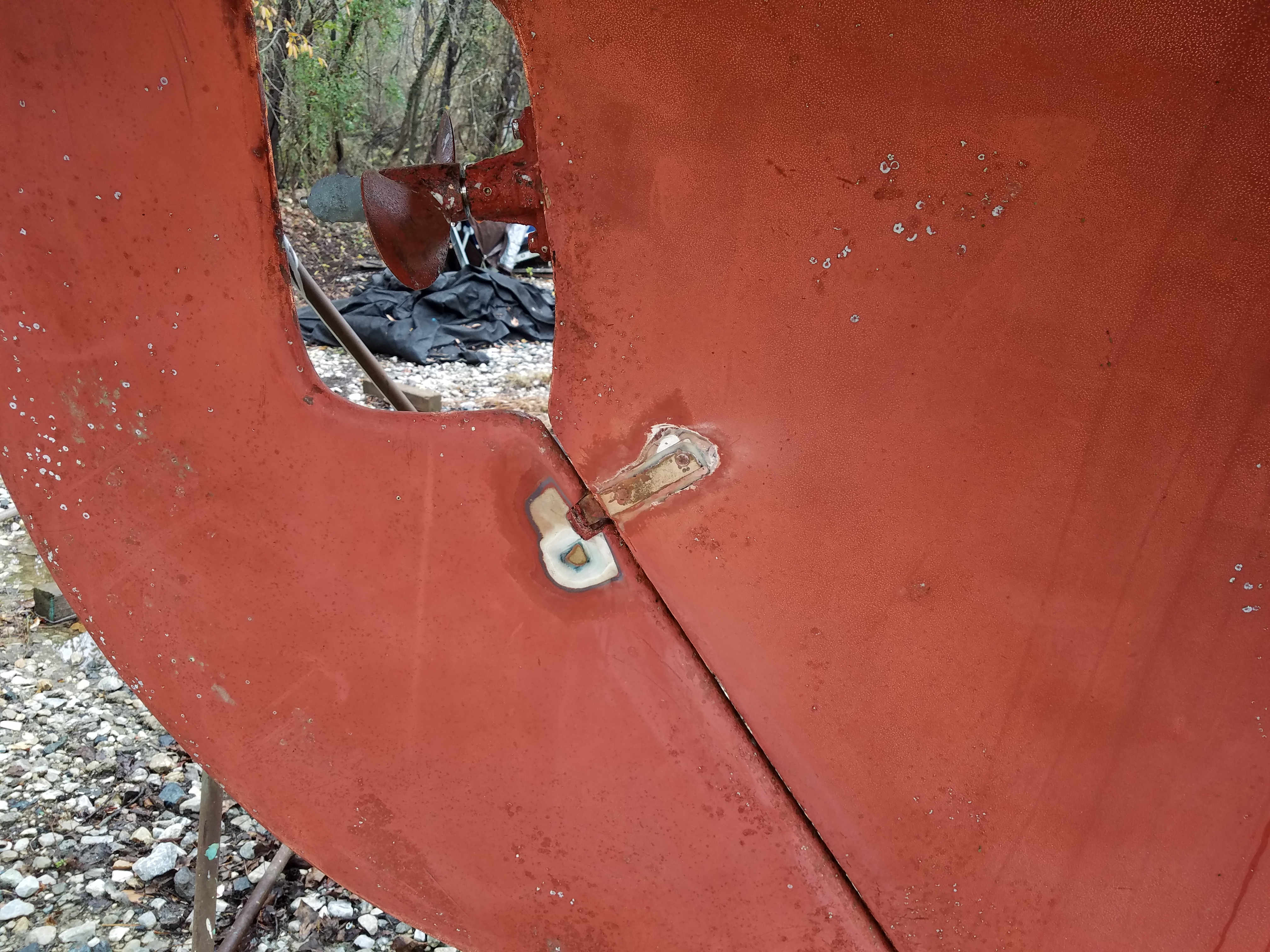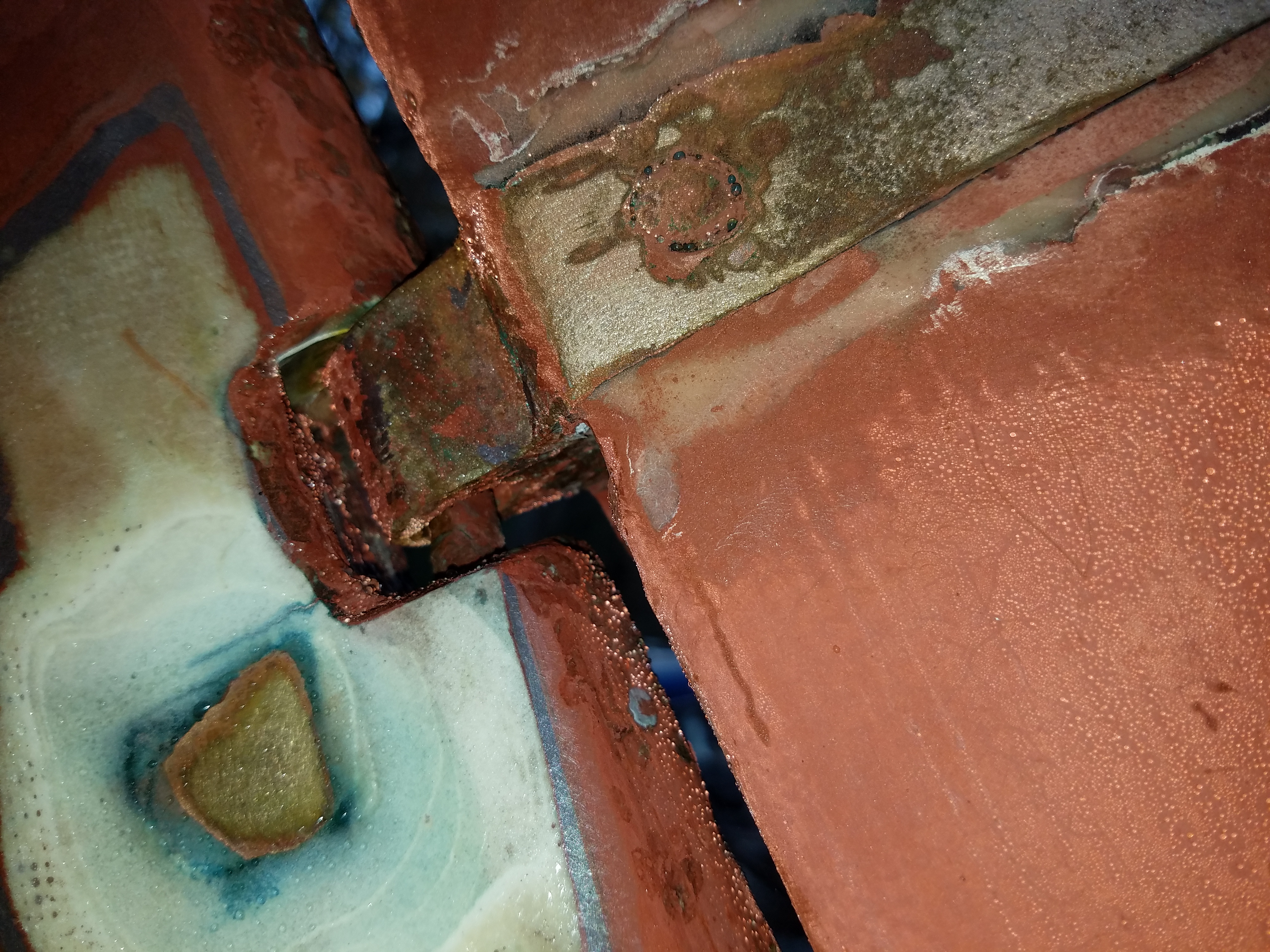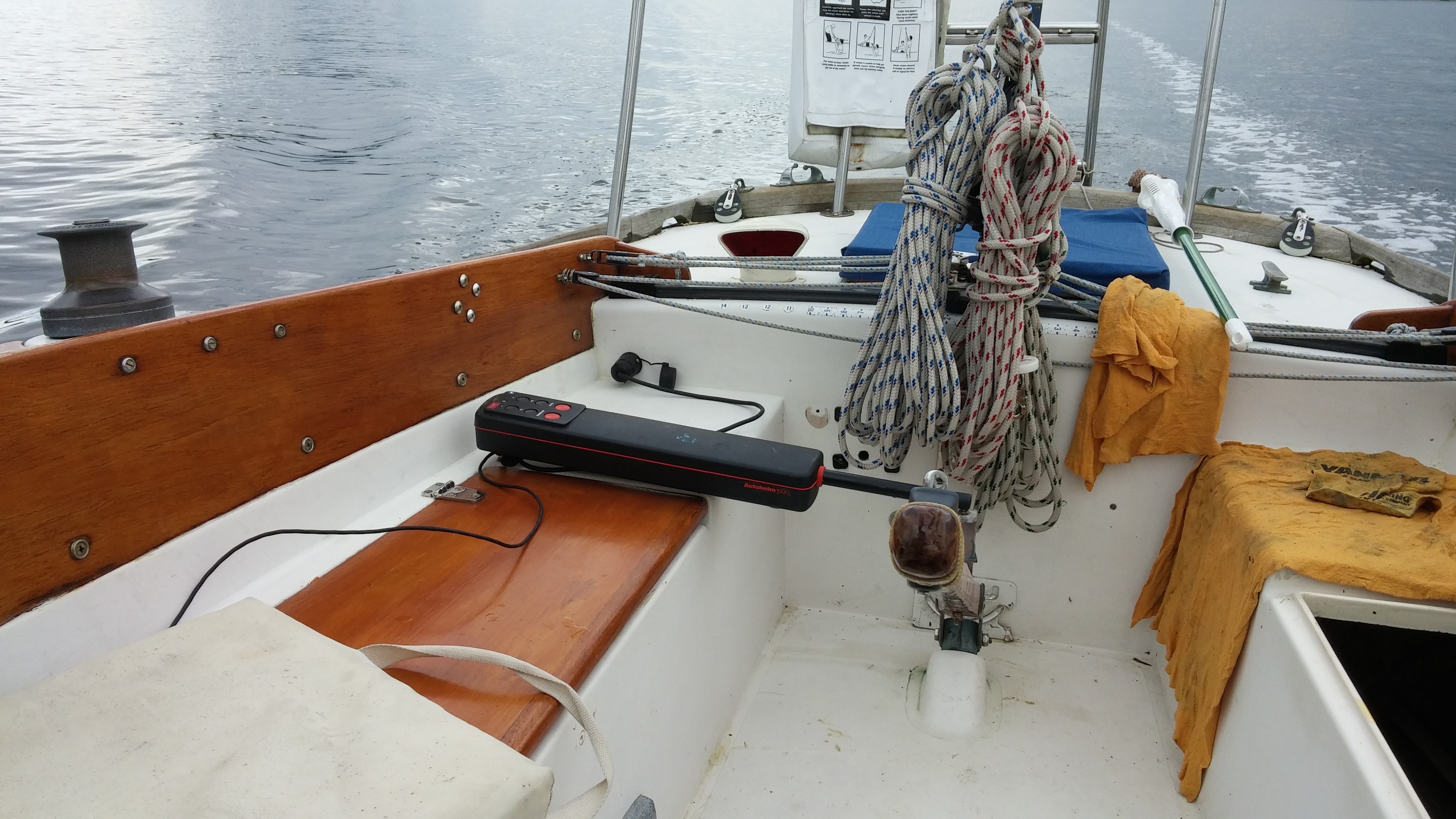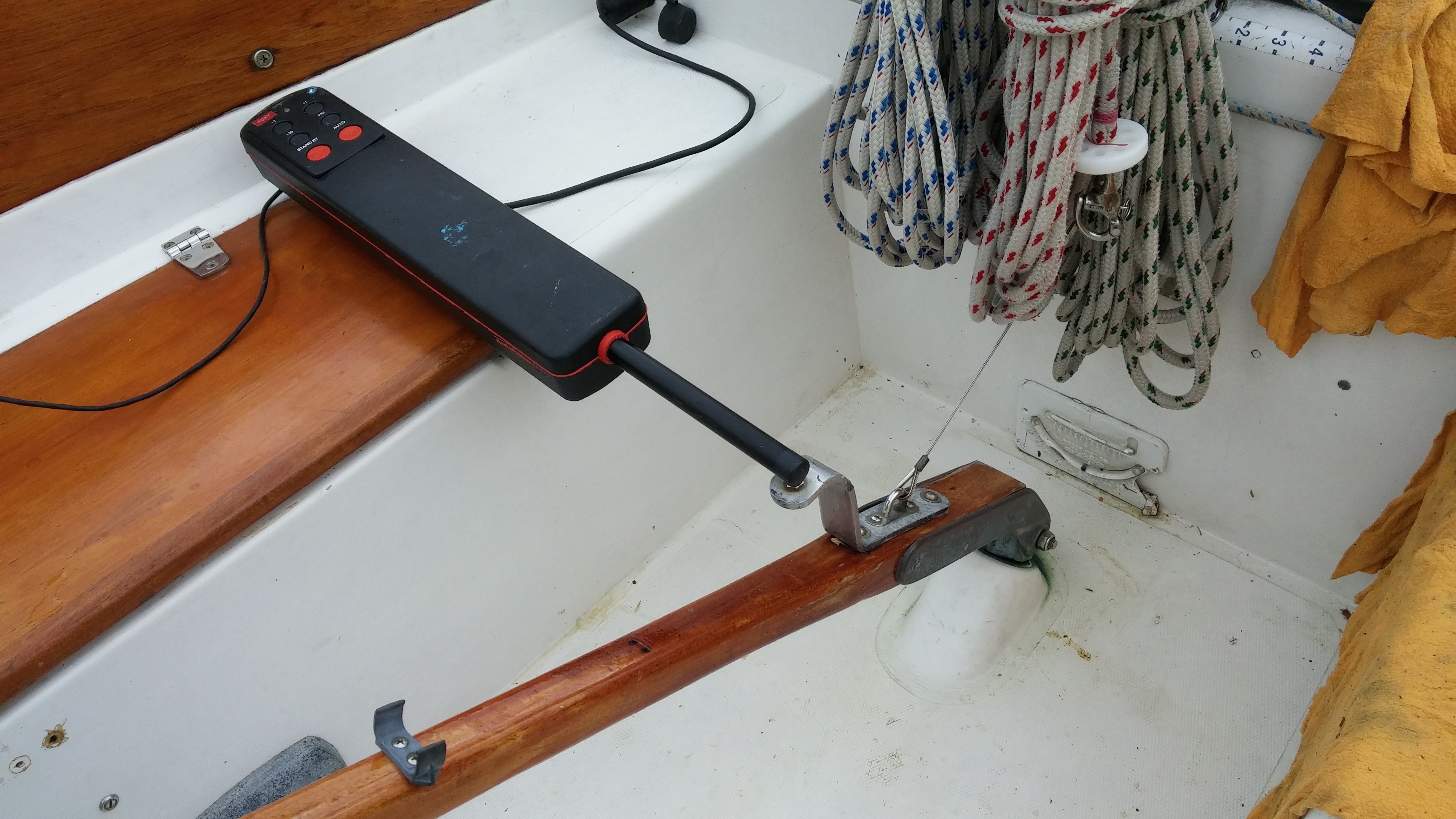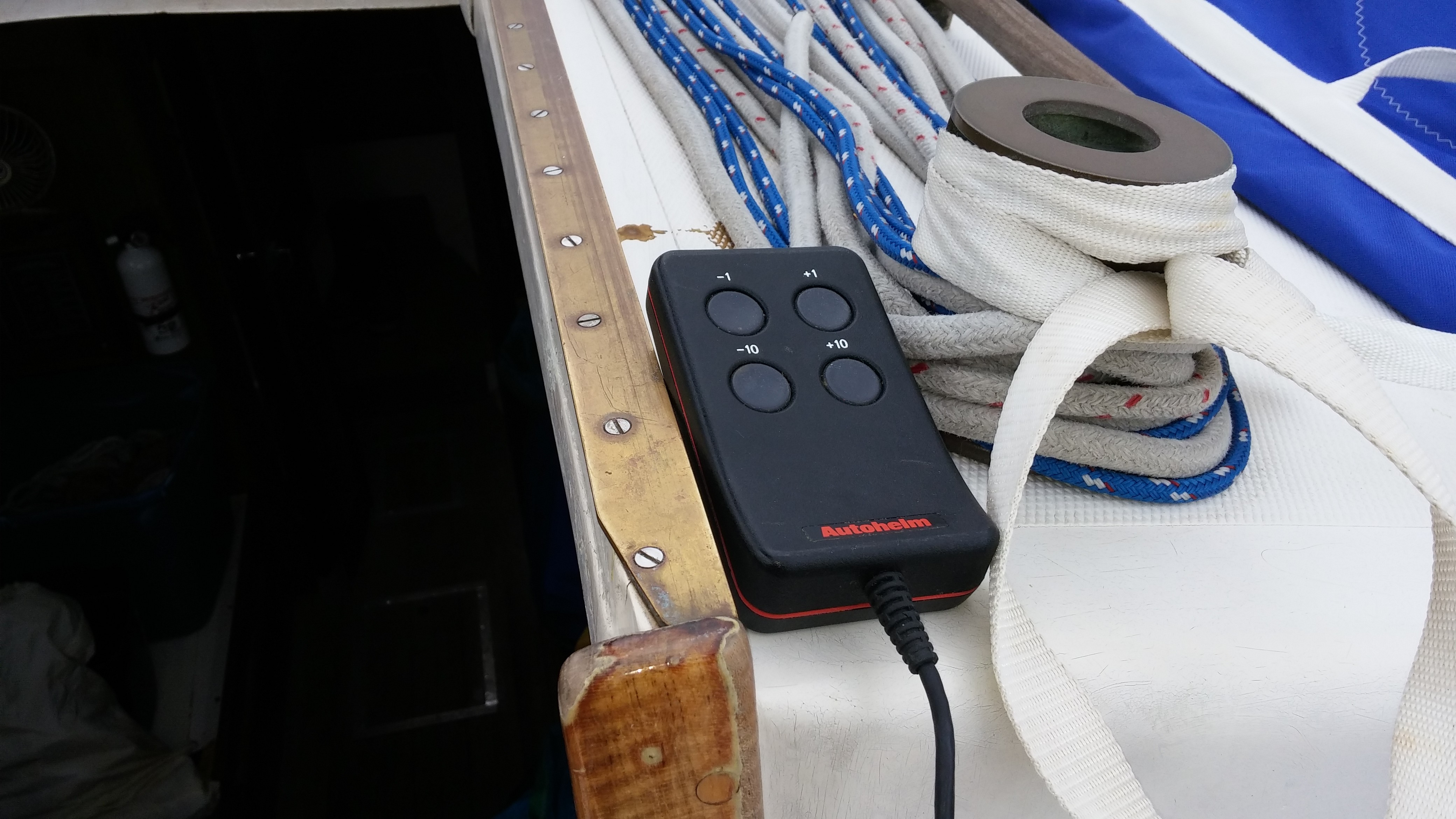The following are augmented notes from Charles’ August 2017 facebook post
The picture on the left is from this project. The one on the right is from Guy Lefebvre who used soup spoons for a different look.
The riser is 1/4″x2″x3″ G10 stanchion backing plate sold by Jamestown Dist.
Using a table saw, I cut them down to be about 3/8″+/- wider than the caps
then rounded the corners on a belt sander. I drilled two holes in each to
create the ends of the slot for the chainplate and removed the remaining
material from between the the holes using a cutting wheel on a dremel
tool. Then primed and painted each on all surfaces to be exposed leaving
bottom (side to face deck) naked.
Removed the chainplates and used a rat tail rasp in a drill to clean out
slots in the deck.
I traced the outline of each riser in its place on the deck with pencil to
give a guide to rough the surface for bonding. Roughed the deck w/ small
scrap of 60 grit by hand trying to stay in the lines, (that has been a
challenge for me even back in the Crayola days). Also roughed the bottoms
of the risers.
Bonded the risers in place using Six/Ten, expensive stuff but once you
start using it you realize the value in time saved. Really it pays for
itself in saving waste as you can use what you need and “reseal” the tube.
Coated the bottom of each riser completely and made a tiny fillet around
the base w/ my little finger. After the epoxy dried, it used the drill
w/rat tail rasp on the slots again to clear away the epoxy that squished out
into the slot. Once the epoxy dried I painted a second coat on the riser
mainly to cover the epoxy around the base. This was done out of concern
for UV degrading the epoxy. Pre drilled pilot holes for caps
Re-installed chainplates, filled the remainder of slots with generous goops
of LifeCaulk. Installed chainplate caps with tiny wood screws and cleaned
up with mineral spirits.
Couple additional odd details, Due to the angle of the chainplate for the
backstay, the slot in the cover had to be elongated and the slot in the
riser was “angled” correspondingly using the rasp in the drill. Because
this was all done with the mast up, it was done in two phases. First I did
the four lowers. Once they were all done and that rigging was reconnected,
I did the capshrouds and the backstay. Just as a precaution, I used the
main halyard bridled to the aft deck cleats in place of the backstay.
==================
Weight 1 oz. (28 g) Chainplate Cover fits Chainplates 1 1/2″ (37mm) x 3/8″ (9mm). Overall Size 2 1/2″ x 1 1/4″.
===================
G10 Fiberglass Board
G10 fiberglass boards are made of a special glass epoxy laminate that has extremely high strength. G10 fiberglass is used in marine applications due to its superior strength, moisture resistance, and excellent electrical and fire insulation.
Fiberglass boards make excellent non-corrosive backing plates for high load deck hardware or bond to engine room bulkheads to hold mounting brackets. G10 boards are sold in 1/4 and 1/2 inch thickness.
G-10 is similar in strength and density to starboard, but because it is formed from epoxy resin, it bonds easily using most two-part epoxies.
Available in Backing Plate sizes and full sheets.









